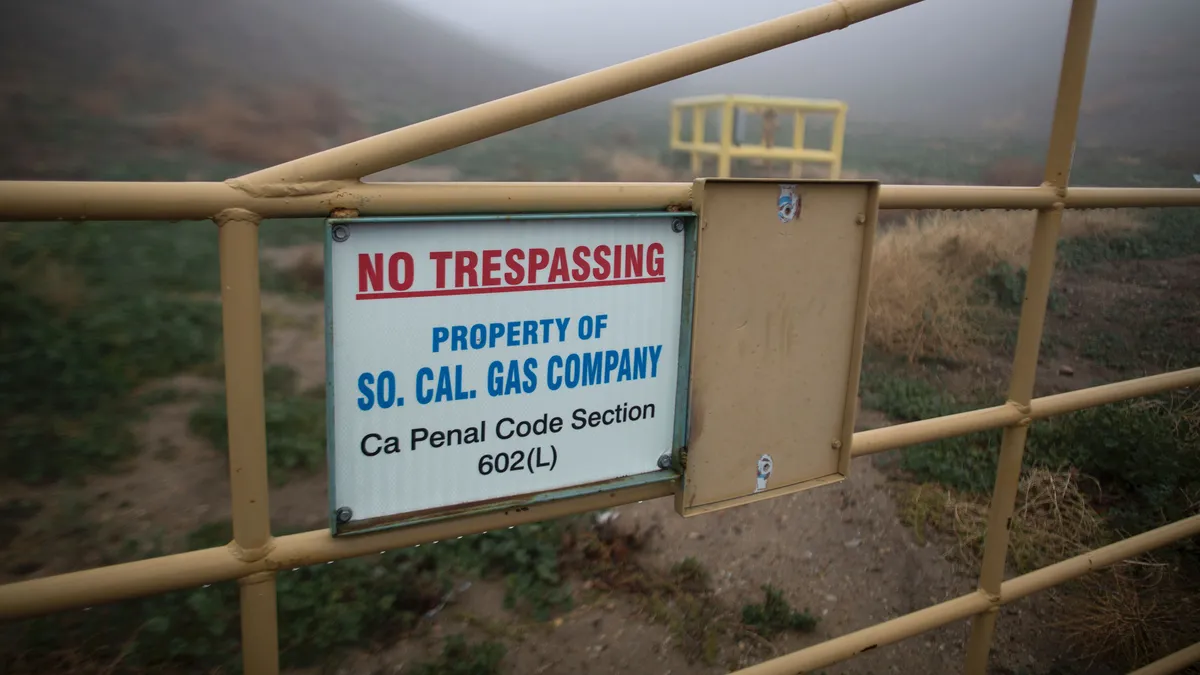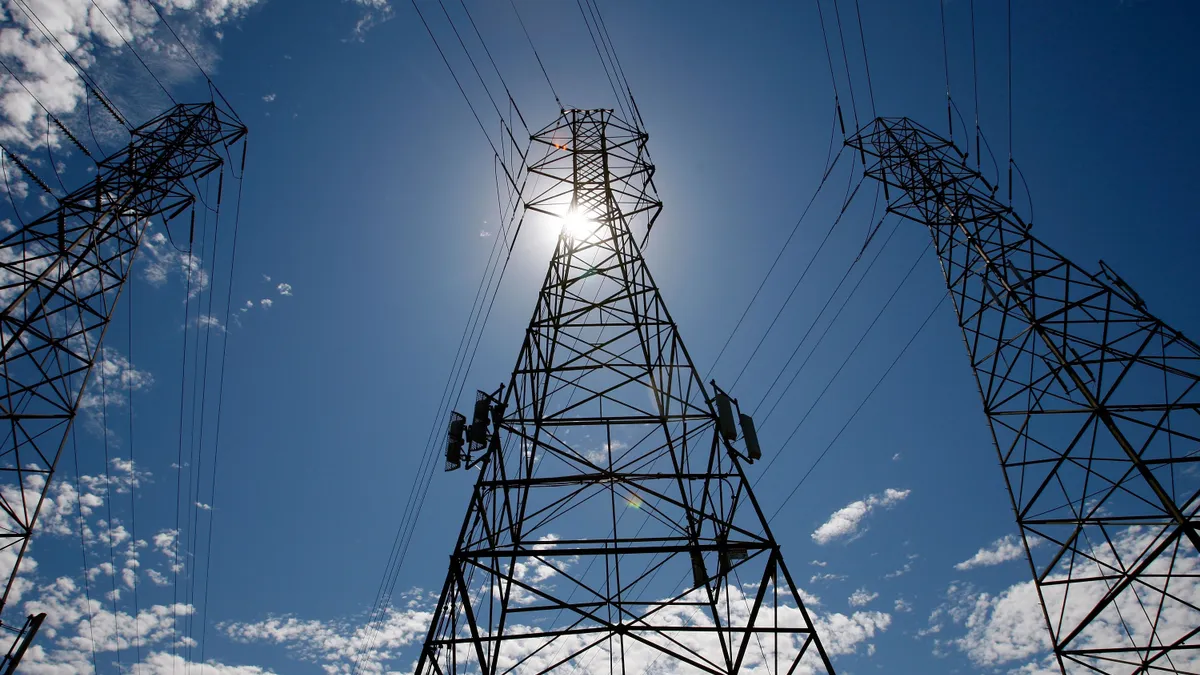Dive Brief:
- The state of California believes the Aliso Canyon gas storage facility may be safely reopened and operated, following discovery in 2015 that a leak had significantly depleted reserves.
- The Division of Oil, Gas and Geothermal Resources and the California Public Utilities Commission were both required to concur whether or not the facility is safe before gas injections could resume.
- The facility will be limited to less than one-third of its overall capacity, which officials say is just enough to ensure the Los Angeles area avoids energy disruptions. Southern California Gas says it will institute around-the-clock pressure monitoring of all wells to ensure safety.
Dive Insight:
Operations at the Aliso Canyon gas storage facility will not resume immediately — a range of requirements must still be met — but both the state and the utility say it can happen safely.
CPUC Executive Director Timothy Sullivan said the commission's review of testing results "confirmed the integrity of the wells at this facility." But he added that “out of an abundance of caution and consideration for public safety, storage capacity will be restricted to approximately 28% of the facility’s maximum capacity – just enough to avoid energy disruptions in the Los Angeles area.”
The leak was discovered in October 2015, and had a significant impact on the region. Methane emissions spiked, and the U.S. Energy Information Administration estimated gas generation was off about 20% during June, July and August of last year. The state speeded up deploying battery storage projects to avoid energy shortages.
While some critics say the facility is still unsafe or unnecessary to meeting energy needs, the utility said it plans to move ahead with reopening.
“Aliso Canyon is an important part of Southern California’s energy system, supporting the reliability of natural gas and electricity services for millions of people," the utility said, arguing that it has "met—and in many cases, exceeded—the rigorous requirements of the state’s comprehensive safety review."
Under new regulations, the utility will only flow through newly installed and pressure-tested, inner steel tubing. The outer casing of wells only will serve as a secondary layer of protection. The field also will be operated at a reduced pressure, providing an added margin of safety Alongside the testing requirements, approximately 60% of the wells have now been taken out of operation and isolated from the facility.
According to Southern California Gas, injections will not resume immediately. State agencies have outlined steps that must be completed first, including a leak survey of the facility and a flyover to measure methane emissions at the site.














